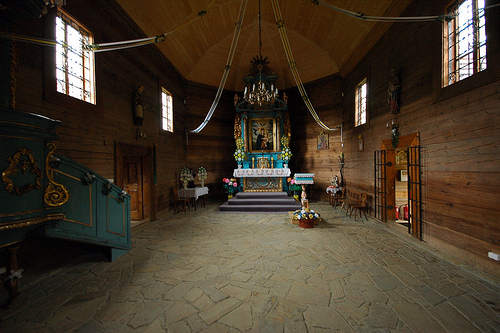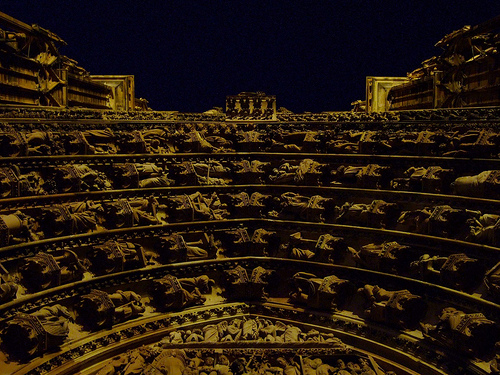Any Catholic space is a feast for the eyes. There’s so much to look at that it’s almost overwhelming: stained glass, statues, icons, frescoes, murals, carvings — a traditional (i.e., old, European) Catholic church is filled with visual stimuli.

Even the simplest wooden church is filled with details that drawn individuals to get a closer look. And entering a great cathedral like Notre Dame of Strassbourg is an overwhelming visual experience.

Yet it’s not just what individuals see now that sets apart Catholicism; there’s a history of visions throughout the Church: corporal visions, imaginative visions, intellectual visions, visions of saints, visions of demons, and probably, at least once, visions of visions. They’ve happened all over the world, and they continue occurring today, so there’s something in Catholicism that either encourages this or encourages believers by causing this. It’s either wish fulfillment or genuine experience — or a mixture of both.
Now I’m not going to suggest that this impresses me. I don’t know whether these seers actually had an experience or whether it was all suggestion and will. That’s not something I can decide. However, I find it striking how very important vision is in the Catholic faith, especially compared to other faiths. Seeing is not believing, but it helps, and Catholicism realizes that and makes use of it.
0 Comments